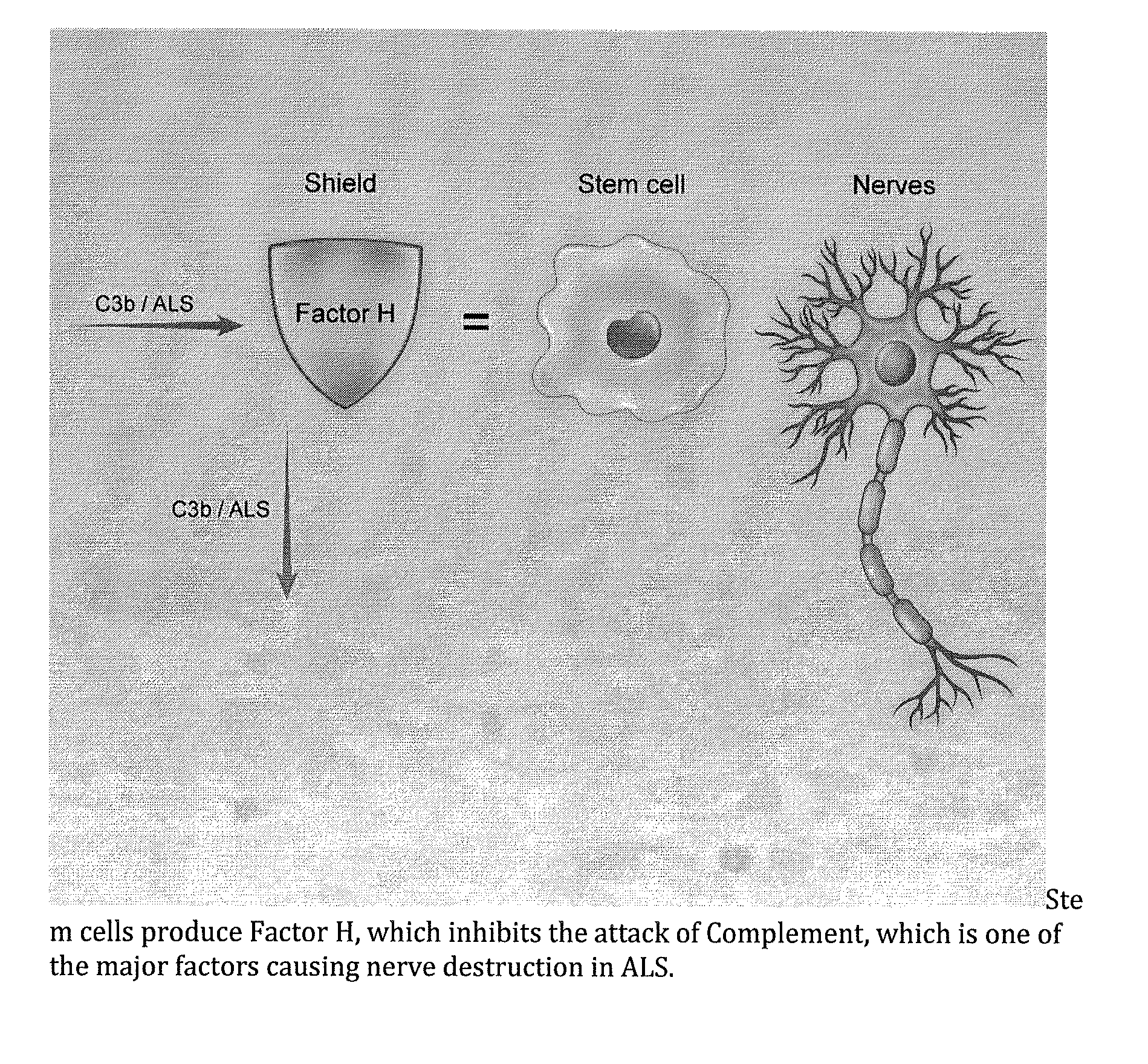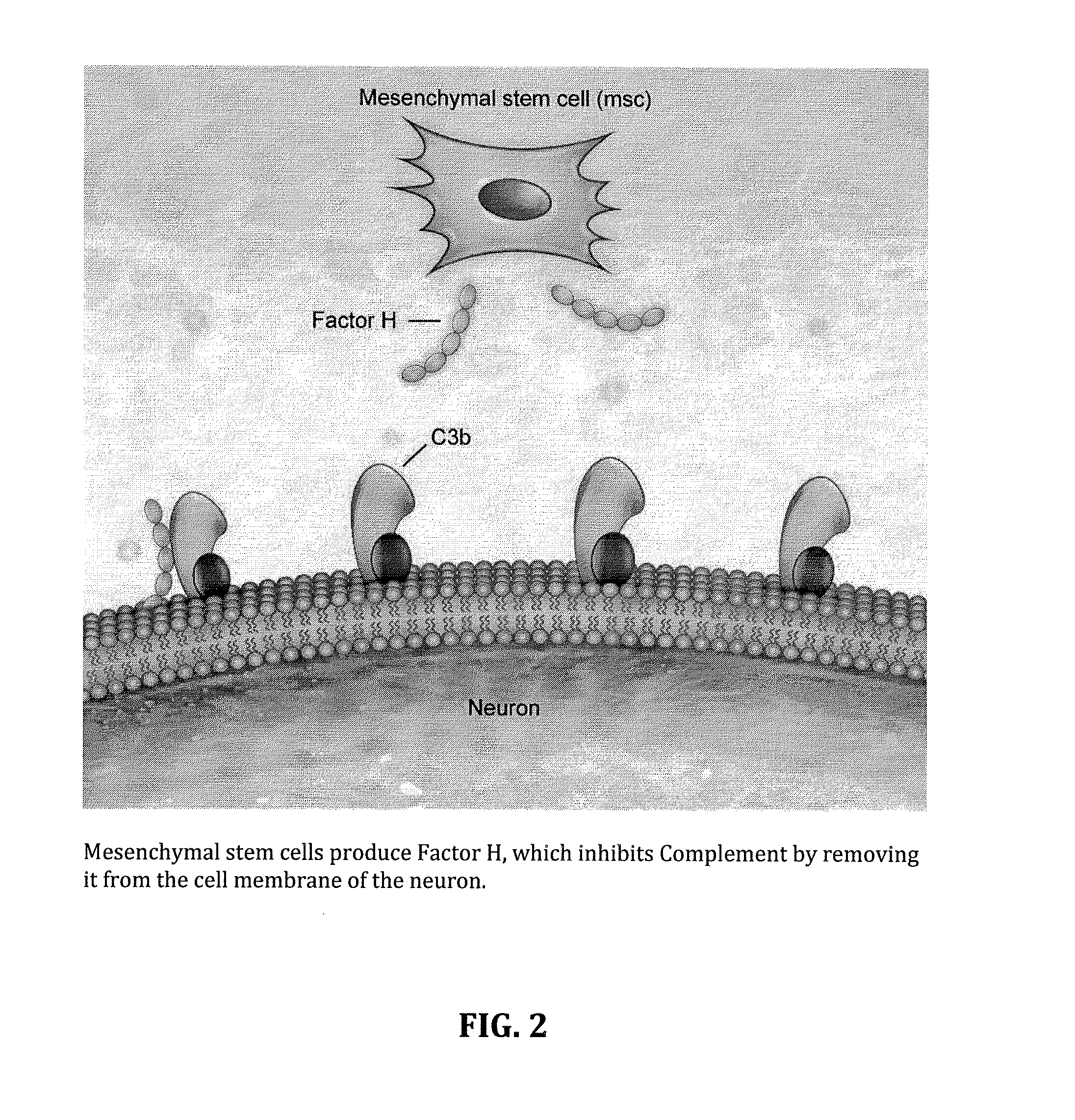Method for treating ALS via the increased production of factor h
a technology of factor h and neurodegenerative disorders, applied in the field of neurodegenerative related disorders, can solve the problems of muscle weakness, reduced vascularity, and reduced vascularity, and achieve the effects of increasing the presence of factor h, inhibiting the effect of complement, and increasing the secretion of factor h
- Summary
- Abstract
- Description
- Claims
- Application Information
AI Technical Summary
Benefits of technology
Problems solved by technology
Method used
Image
Examples
example treatment 1
Intra-Spinal Injection of Reprogrammed Adipose Derived Stem Cells for Improving The Symptoms Associated with ALS
[0053]Amyotrophic lateral sclerosis (ALS) is a severe progressive neurodegenerative disease with an unknown and poorly understood etiology. There are genetic and familial forms, but also environment and occupational exposure can result in risk factors for the development of ALS. Patients have a wide range of different clinical features. Inflammation and immune abnormalities have been detected in both human patients and the animal models. These immune abnormalities seem to be present regardless of the underlying cause. Embodied treatments have shown that intra-spinal injection of reprogrammed adipose derived stem cells results in some improvement of the symptoms of ALS. Patients treated with adipose derived ASC showed an early response, usually within the first few weeks of treatment. We postulate that this early response may be due to immune modulation. Embodiments effecti...
PUM
| Property | Measurement | Unit |
|---|---|---|
| mass | aaaaa | aaaaa |
| strength | aaaaa | aaaaa |
| MRI | aaaaa | aaaaa |
Abstract
Description
Claims
Application Information
 Login to View More
Login to View More - R&D
- Intellectual Property
- Life Sciences
- Materials
- Tech Scout
- Unparalleled Data Quality
- Higher Quality Content
- 60% Fewer Hallucinations
Browse by: Latest US Patents, China's latest patents, Technical Efficacy Thesaurus, Application Domain, Technology Topic, Popular Technical Reports.
© 2025 PatSnap. All rights reserved.Legal|Privacy policy|Modern Slavery Act Transparency Statement|Sitemap|About US| Contact US: help@patsnap.com



